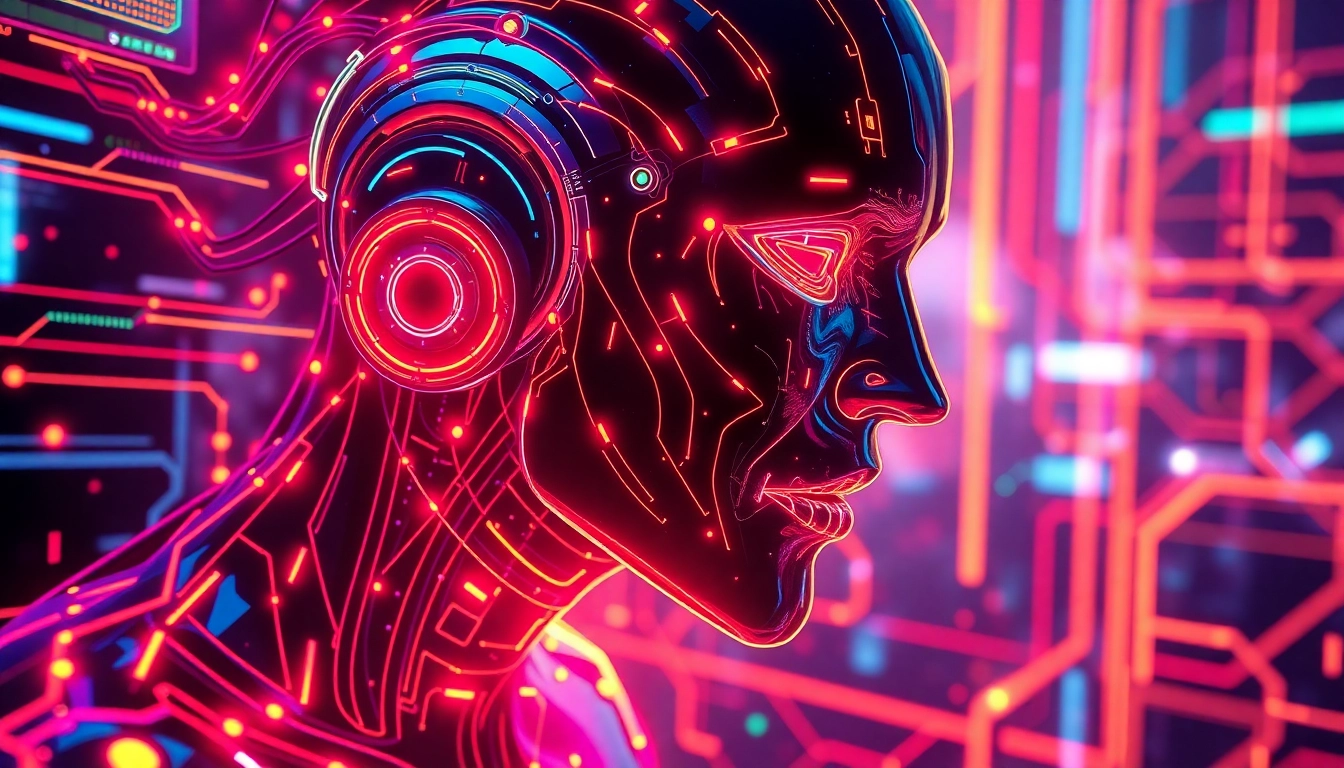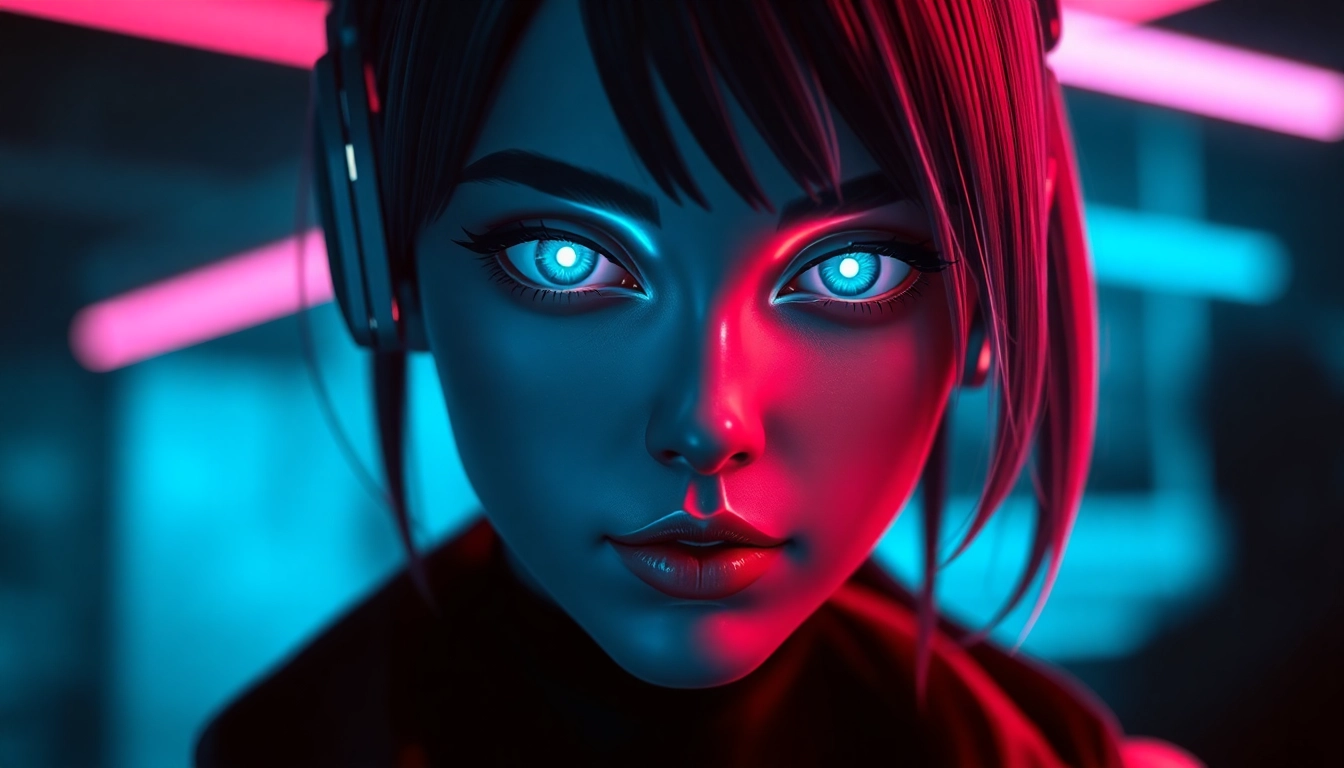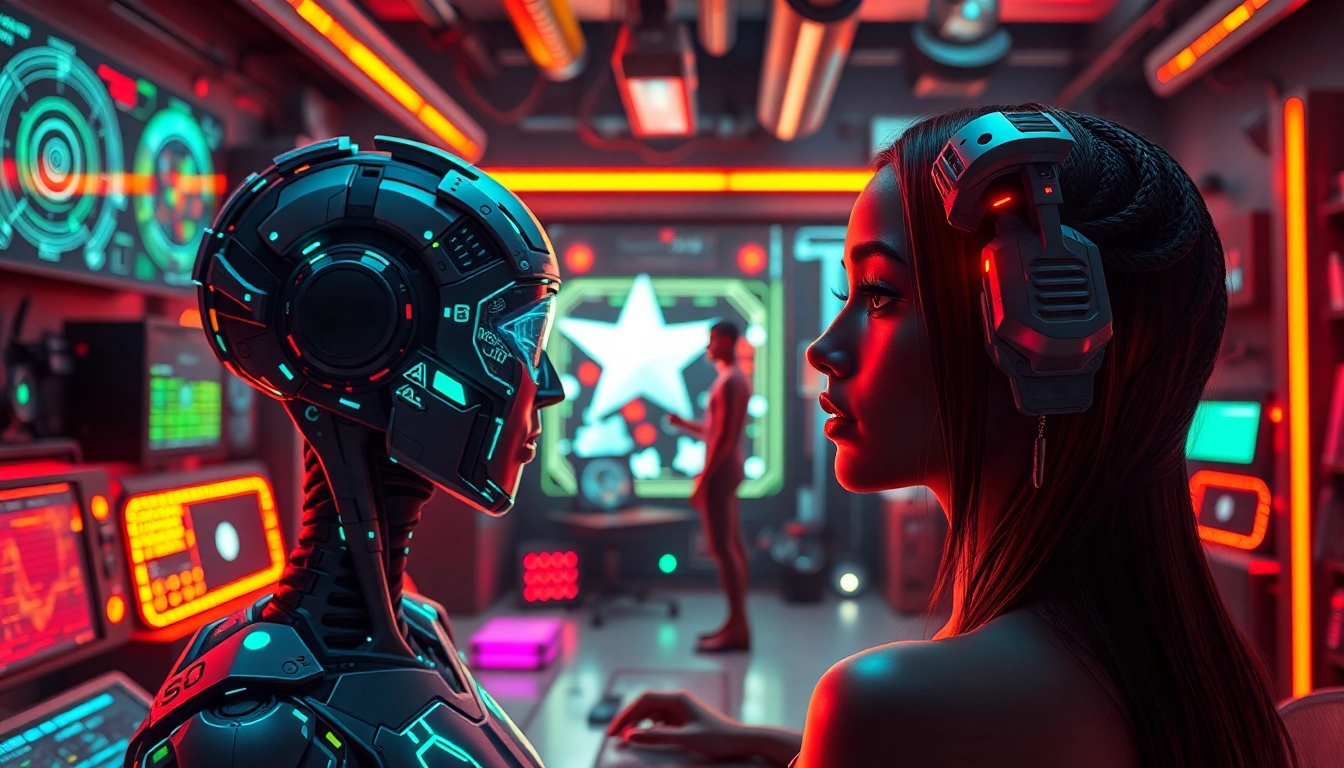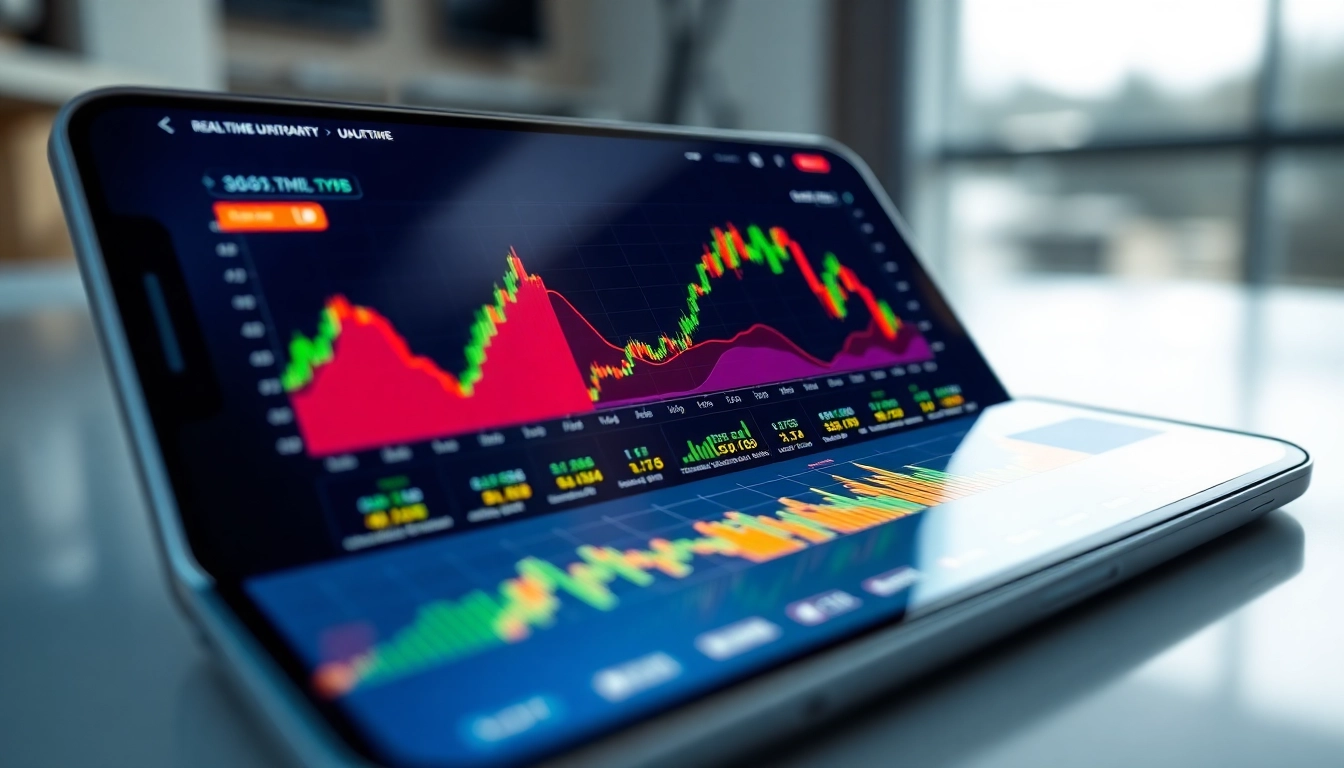Understanding the Rise of No-Restriction AI Image Generators
In recent years, the landscape of digital art and image creation has been revolutionized by advancements in artificial intelligence (AI). Among the most significant developments is the emergence of ai image generator no restrictions platforms, which empower both creators and enthusiasts to generate high-quality visuals without the limitations that traditionally constrained AI tools. These platforms challenge the boundaries of creativity, privacy, and online expression, enabling users to produce and share visuals that were once impossible due to content filters and censorship policies.
What Defines an AI image generator no restrictions
An AI image generator no restrictions refers to a platform or tool that allows users to create images from text prompts or input data without imposing content restrictions, censorship, or limitations on thematic elements. These platforms prioritize freedom of expression, allowing for the generation of both creatively inspired artworks and NSFW (not safe for work) content, depending on user intent. Key features include unrestricted prompt inputs, high-resolution output, and often, the absence of watermarks or usage limits.
Unlike traditional AI generators that filter out explicit, violent, or controversial content to adhere to ethical standards or platform policies, no-restriction tools tend to operate with minimal or no content moderation. This enables a more authentic, unfiltered creative process, making them especially popular among artists, hobbyists, and adult content creators.
Historical overview of unrestricted image tools
The journey toward unrestricted AI image generators began with early experiments like DeepDream and early versions of DALL-E, which implemented strict filters to prevent misuse. However, as AI technology matured, enthusiasts and developers sought more freedom to explore its full potential. This desire led to open-source projects like Artbreeder and community-driven platforms on Reddit and Discord, emphasizing user control and minimal censorship.
In 2023–2024, several platforms surfaced intentionally designed for unrestricted image synthesis, often operated outside of strict corporate oversight. These platforms arose amid debates around ethical boundaries, privacy rights, and creative freedom, fueling a global conversation about balancing safety with expression. Today, their rise signifies a paradigm shift toward democratizing digital art—where anyone can create high-quality visuals without restraint.
Key features setting these platforms apart
- Unrestricted prompts: The core feature is their acceptance of any user input, including NSFW or controversial themes.
- High-resolution output: Capable of producing stunning, detailed images suitable for commercial or personal use.
- Speed and scalability: Many platforms process large batches rapidly, facilitating professional workflows and creative experimentation.
- Accessibility: Typically web-based, these generators require no complex setup or powerful hardware.
- Open-source components: Some platforms allow users to modify or improve the code, fostering community innovation.
Review of the Best AI Image Generators No Restrictions in 2025
Perchance AI: Fast, batch processing, no login required
Perchance AI has established itself as an industry leader by offering a free, no sign-up platform capable of generating images rapidly and in bulk. Its strength lies in its simplicity and flexibility—users simply input text prompts and receive multiple high-res images within seconds. As an open environment, Perchance AI eschews restrictions, enabling an expansive range of visuals, from artistic abstractions to NSFW content. Its interface is intuitive, making it ideal for artists, marketers, and hobbyists alike.
One of the standout features of Perchance AI is its batch processing capability, allowing multiple images to be generated simultaneously, which significantly accelerates creative workflows. Its open nature has made it popular on social media and among communities that prioritize unrestricted artistic expression.
Raphael AI: Free, unlimited, high-quality visuals
Raphael AI has garnered attention for providing an unlimited, free generation of photorealistic images from textual prompts. Its architecture relies on cutting-edge generative models that produce high-fidelity visuals suitable for commercial projects, digital art, or personal experimentation. Its no-sign-up policy makes it accessible to all, democratizing the process of high-resolution image creation.
Raphael AI’s strength lies in its ability to generate consistent and realistic images at scale without charge or restrictions. This has attracted a wide user base, including content creators who need large volumes of images for projects such as game design, marketing, and visual storytelling.
Cream of the crop: CGDream, Brain Pod, and others
Among the notable platforms in this space are CGDream and Brain Pod AI, which offer unrestricted visuals tailored for complex, high-quality outputs. CGDream emphasizes AI-powered design tools for creative professionals, enabling unrestricted artistic expression without censorship barriers. Similarly, Brain Pod AI focuses on offering flexible, safe-to-use AI tools capable of generating a broad spectrum of images, including adult content.
These platforms differentiate themselves by integrating advanced options such as custom style transfers, multi-modal inputs, and an extensive library of generative models. They serve as potent engines for digital artists and entrepreneurs seeking complete freedom in visual creation.
How to Maximize Your Experience with No Restrictions Platforms
Essential tips for creating vivid, high-res images
To leverage these platforms effectively, use detailed and descriptive prompts to ensure clarity and precision in your outputs. Combining adjectives, style references, and specific details enhances both realism and artistic quality. For example, instead of writing “cat,” try “a highly detailed photorealistic image of a ginger cat sitting on a vintage wooden table in warm sunlight.”
Experiment with different prompt structures, and utilize multiple iterations to refine the final image. Many platforms allow optional parameters like style, color palette, or resolution—take advantage of these to tailor results.
Understanding platform limitations and safety
While these platforms are praised for their freedom, users should remain aware of potential limitations. Some platforms may have latent restrictions or filters that activate under certain conditions. Also, despite the “no restrictions” label, it is essential to verify the platform’s privacy policies and data practices, especially when generating NSFW or sensitive content.
To prevent misuse, developers recommend responsible use, avoiding malicious activities or harmful content. Regularly updating security settings and maintaining good cybersecurity hygiene is a prudent step.
Best practices for ethical and creative use
Always respect copyright and ownership rights when creating and sharing AI-generated images. Consider watermarking or attributing images if used commercially. Engage with community guidelines and use restrictions on other platforms responsibly to strike a balance between creative freedom and social responsibility.
For projects involving sensitive content, implement additional security measures, such as encrypted storage, access controls, and consent when sharing with others.
Legal and Ethical Considerations in Unrestricted AI Art
Copyright concerns and ownership rights
Ownership rights for AI-generated images remain a complex legal area. Depending on jurisdiction and platform policies, the user might hold the copyright, or it could be shared with the platform developers. Some platforms specify that users retain full rights, while others reserve certain rights for commercial or promotional use.
To ensure legal compliance, always review the terms of service and licensing agreements before distributing or monetizing AI-created visuals. Storing provenance and creation records can protect your rights and clarify ownership.
Guidelines to avoid misuse and harmful content
Despite the appeal of unrestricted tools, responsible use is paramount. Avoid generating or disseminating harmful, defamatory, or illegal content. Many platforms implement automatic detection systems to flag prohibited material, but user vigilance is crucial.
Educate yourself on local laws regarding NSFW content, and always obtain explicit consent when using or sharing images depicting others, especially in adult or sensitive contexts.
Balancing creativity with responsibility
Unrestricted AI art platforms empower limitless creativity, but this freedom entails ethical responsibilities. Strive to create content that fosters positive social impact, avoids propagating stereotypes, and respects cultural sensitivities. Implement content moderation when sharing publicly, and consider community standards to prevent backlash or legal issues.
The Future of Unrestricted AI Image Generators
Emerging trends and innovations in 2025 and beyond
As AI technology advances, the trend toward unrestricted image generation will deepen, with innovations like multi-modal inputs, real-time rendering, and integration with other creative tools. Platforms will likely leverage federated learning to improve models while preserving privacy, thus enabling richer, more personalized visual experiences.
Moreover, decentralized platforms based on blockchain may emerge, offering enhanced ownership rights, provenance tracking, and monetization. AI models will become more sophisticated, enabling hyper-realistic, multi-layered images that adapt seamlessly to user inputs.
Potential impacts on digital art and industry
Unrestricted AI image generators threaten to democratize digital art further, lowering entry barriers for amateurs and professionals alike. They could reshape industries such as advertising, gaming, and entertainment by reducing production costs and enabling rapid prototyping of visual concepts.
However, this technological shift also raises concerns regarding copyright infringement, deepfake misuse, and authenticity. Regulatory frameworks and ethical guidelines will need to evolve concurrently to sustain trust and safety in digital ecosystems.
How users can adapt and benefit from new tools
Proactively, artists and creators should stay informed about emerging tools, participate in community discussions, and develop skills in prompt engineering to maximize these platforms’ potential. Embracing open standards and contributing to ethical discourse will ensure that unrestricted AI artistry remains a force for positive innovation.
Investing in digital literacy and ethical AI understanding will prepare users to navigate evolving legal landscapes and technological capabilities responsibly.
Conclusion
The advent of ai image generator no restrictions platforms marks a significant milestone in digital creativity, offering unprecedented freedom to generate diverse, high-quality visuals effortlessly. As these tools become more sophisticated and accessible in 2025, they promise to transform industries, enhance artistic expression, and foster new forms of personal and commercial storytelling. However, responsible use and ongoing ethical considerations will be vital to ensure these powerful tools benefit society while respecting legal boundaries and safety standards. For anyone interested in exploring the cutting edge of AI-driven visual art, integrating unrestricted image generators into your creative toolkit can unlock extraordinary possibilities—just remember to do so thoughtfully and ethically.



